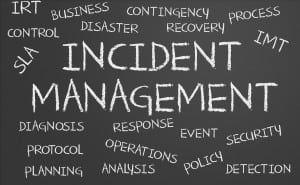
It’s mind-boggling how much work needs to be done by IT staff for every additional in-house IT function. Mobility, remote access, security, DR, desktops, servers – any one of these is a full-time job in itself.
Now, it is more common for people to know, understand and accept that technology is a continually changing and ongoing process. In the past, admins would put projects to bed after completion, and move on. Now, competition has increased, and if IT sits back on one function for too long, then suddenly that function would be better outsourced. Businesses are recognizing this, and they are starting to apply strategic outsourcing and sift non-core processes from core capabilities.
If you have one or a few IT people in your organization, then those people will quickly reach a saturation point, beyond which they will be unable to look for and maintain more IT functions for your business – even if those functions would help you succeed. That’s why it is critically important for business owners, and management, even at $300 million companies, to encourage their IT staff to look for ways to improve the business without fear of adding to their workload.
At the enterprise level, the role of the CIO is changing. IT departments are turning their attention from support, to the unknown; they are identifying new business-winning software. That is one of our critical roles – to stay updated on the field, so we can bring the best IT back to help our clients succeed.
The story is different when you go directly to the cloud provider who is trying to tweak and pitch their service. As a consultant, you are our first priority, and we really want you to choose the provider that fits you best, who will set you up for success.
At this point the options out there are staggering. Are you looking for DR, or ERP, or desktops, or servers? Do you need Infrastructure as a Service (IaaS), Software as a Service (SaaS), or Platform as a Service (PaaS). The field is too complicated for anyone but a specialist to help you find the right solutions. Come talk to us about what your business needs in 2015.
Call our business managed IT services department directly at (404) 777-0147 or simply fill out this form and we will get in touch with you to set up a getting-to-know-you introductory phone call.
Fill in our quick form
We'll schedule an introductory phone call
We'll take the time to listen and plan the next steps
11285 Elkins Rd Suite E1, Roswell, GA 30076
© Copyright 2024 Centerpoint IT. All Rights Reserved. Website in partnership with Tech Pro Marketing. | Privacy Policy
Get Immediate Help For All Your Technology Issues (404) 777-0147

If you want our team at Centerpoint IT to help you with all or any part of your business IT, cybersecurity, or telephone services, just book a call.
Fill in your information below to get started today.
"*" indicates required fields
Fill in your information below to schedule now.
"*" indicates required fields
Before your organization commits to 1, 2, 3 or even longer managed IT services contract, understand what you’re getting. Centerpoint IT gives you the facts in our Managed IT Services Buyer’s Guide.
Enter your information below and we’ll send it over.
"*" indicates required fields

We are turning 15 and want to celebrate this milestone with you because without you this would not have been possible. Throughout this year look for special promotions on services and tools aimed at Making IT Simple for You so you can focus on your business.

We are turning 15 and want to celebrate this milestone with you because without you this would not have been possible. Throughout this year look for special promotions on services and tools aimed at Making IT Simple for You so you can focus on your business.
https://calendly.com/centerpoint-it/discovery-call